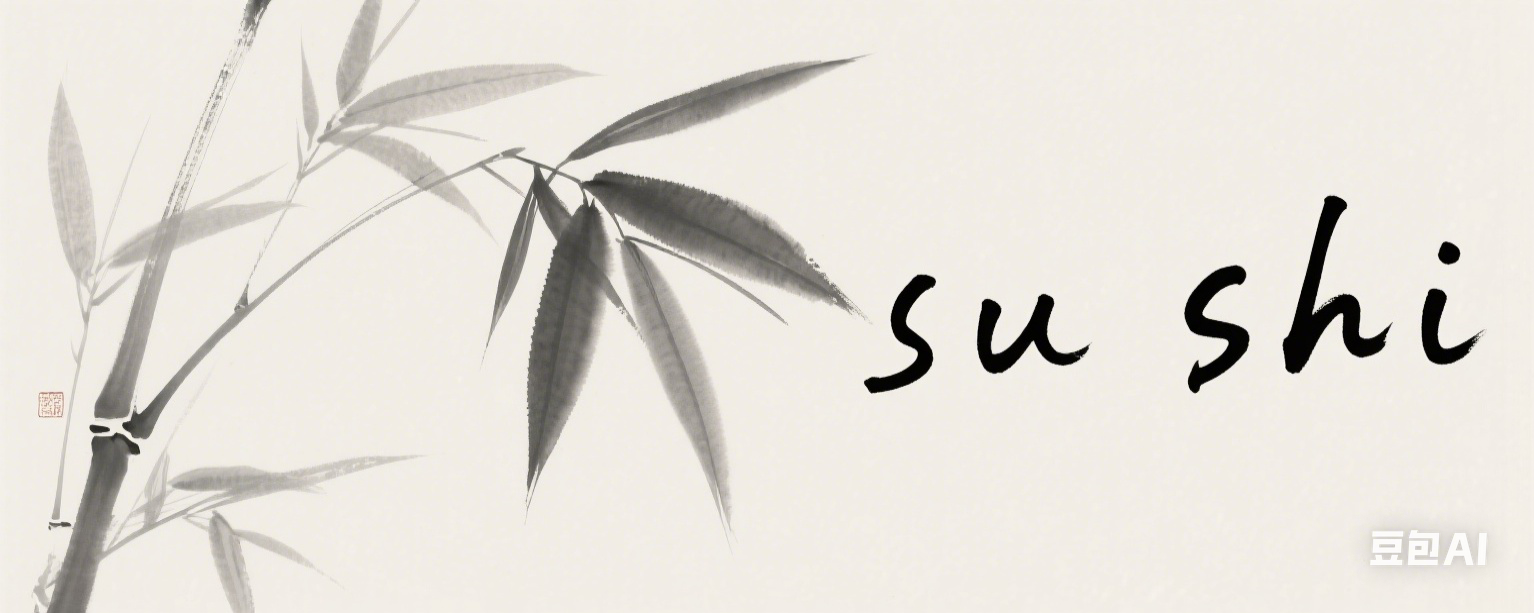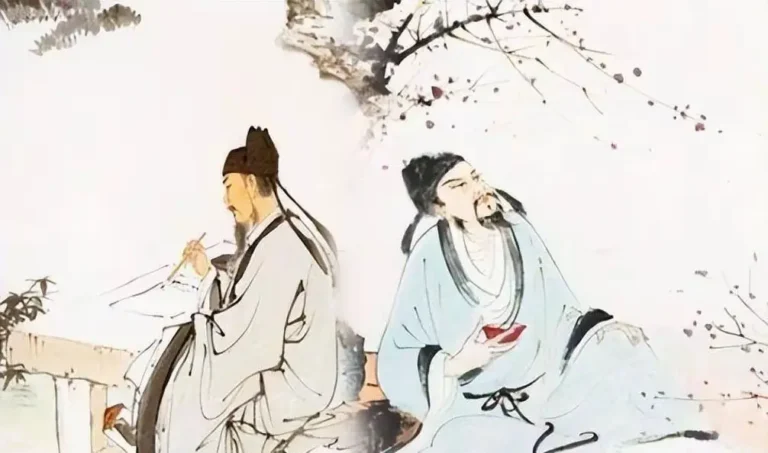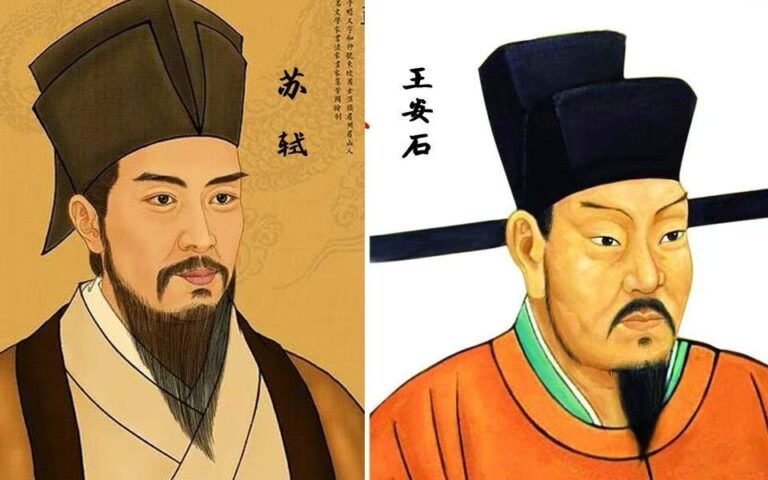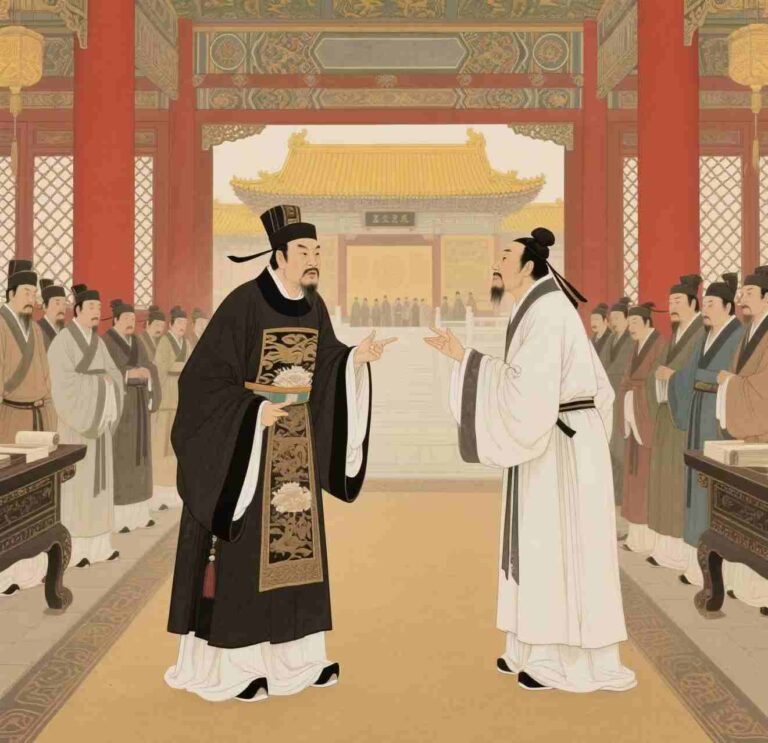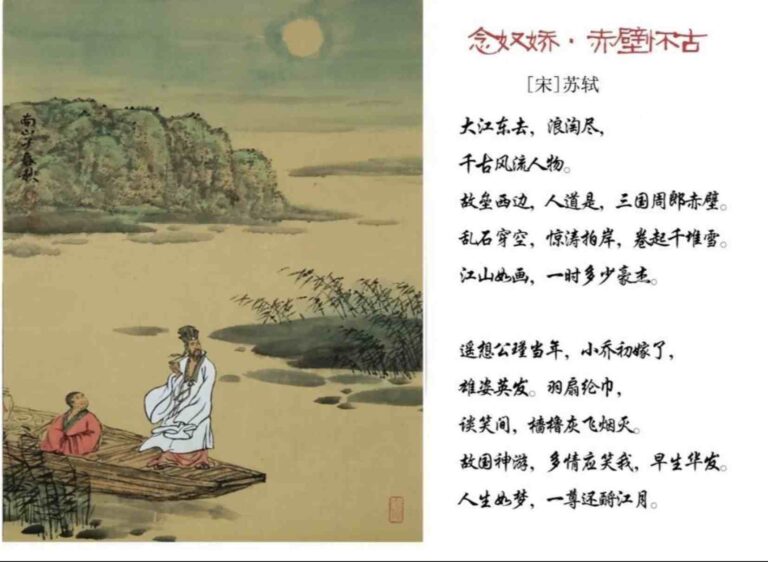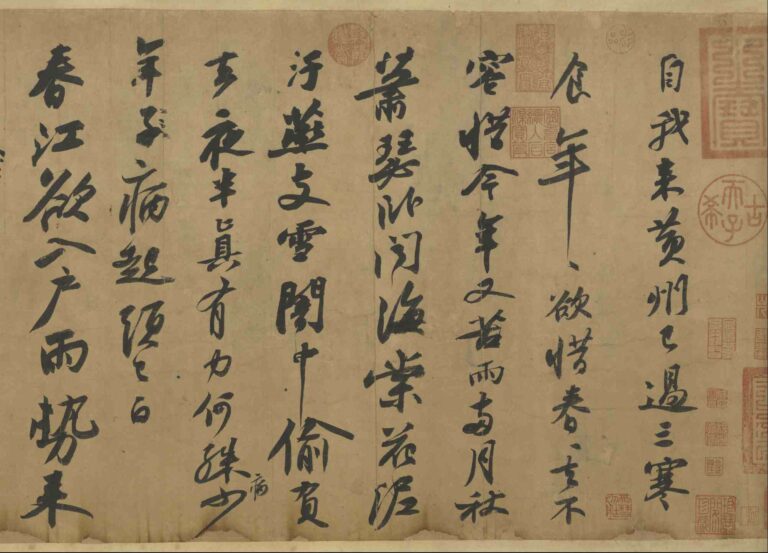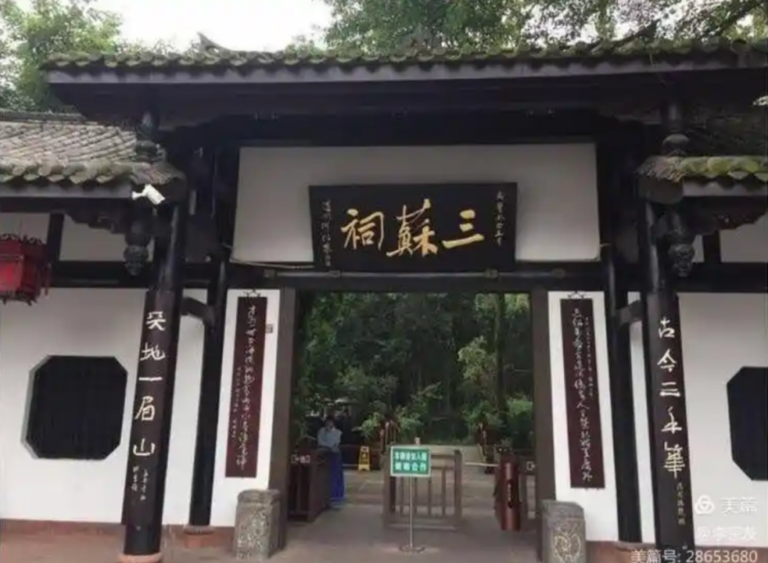“Calming Wind and Waves” Poetry Appreciation
I. Original Poem
“Calming Wind and Waves” – Do Not Listen to the Rain Beating Against the Trees
Written on the 7th day of the 3rd month (March 7, 1082), encountering rain on the way to Shahu. The rain gear had been taken ahead, and my companions were all in distress, but I alone felt unperturbed. Soon, it cleared up, so I composed this poem.

Do not listen to the rain beating against the trees,
Why not walk slowly and chant with ease?
Better than saddled horse I like sandals and cane—
Oh, I would fain,
In a straw cloak, spend my life in mist and rain.
Do not listen to the rain beating against the trees,
Why not walk slowly and chant with ease?
Better than saddled horse I like sandals and cane—
Oh, I would fain,
In a straw cloak, spend my life in mist and rain.
II. Historical Context
This poem was composed on March 7, 1082, during Su Shi’s exile in Huangzhou (modern-day Huanggang, Hubei) following the infamous “Wutai Poetry Case”—a political persecution that nearly cost him his life. The preface explains the setting: While returning from inspecting farmland in Shahu with friends, they were caught in sudden rain. Since their rain gear had been taken ahead, the group became frantic—except for Su Shi, who remained composed.
At this time, Su Shi was enduring:
- Exile after narrowly escaping execution
- A demoted position (Deputy Military Training Commissioner)
- Financial hardship, forcing him to farm for survival
- Political marginalization and psychological strain
Yet, it was in these trials that Su Shi achieved spiritual transcendence—“Calming Wind and Waves” embodies this transformation.
III. Artistic Features
1. Perfect Fusion of Narrative and Lyricism
The poem begins with an ordinary event—getting caught in rain—and elevates it into a meditation on life:
- First stanza (rain scene): “Do not listen to the rain beating against the trees”—an extraordinary opening, revealing detachment.
- Second stanza (aftermath): “Turning my head, I find the dreary beaten track”—a philosophical reflection on hardship.
2. Masterful Use of Contrast
Su Shi employs striking juxtapositions:
- Companions’ “distress” vs. his “unperturbed” demeanor
- The “rain beating against the trees” vs. his “chanting with ease”
- The “chill” of spring wind vs. the “warmth” of sunset
- The superficial duality of “wind and rain” vs. “sunshine”
3. Distinctive Linguistic Style
Su Shi’s language is simple yet profound:
- “Better than saddled horse I like sandals and cane”—material simplicity symbolizes spiritual freedom.
- “Who’s afraid?”—a defiant, succinct declaration.
- “In a straw cloak, spend my life in mist and rain”—a metaphor for embracing life’s storms.
IV. Philosophical Depth
1. Tranquility in Adversity
The poem progresses through three mental states:
- Indifference (“Do not listen”)—shutting out external chaos.
- Acceptance (“Spend my life in mist and rain”)—embracing life’s unpredictability.
- Transcendence (“Impervious to wind, rain or shine”)—rising above duality.
2. Fusion of Confucian, Daoist, and Buddhist Thought
- Confucian resilience (“君子固穷” – the noble man stands firm in poverty).
- Daoist naturalism (going with the flow).
- Buddhist non-attachment (letting go of distinctions).
These philosophies merge into Su Shi’s unique worldview.
3. Elevating Experience into Wisdom
The poem transforms a mundane event into universal truth:
- Physical rain → Life’s hardships
- A journey interrupted → The human condition
- Clearing skies → Inner peace
This artistic sublimation gives the poem timeless relevance.
V. Analysis of Key Lines
1. “Better than saddled horse I like sandals and cane”
Beyond describing simple attire, this line conveys:
- Contentment with little
- Spiritual richness over material wealth
- Rejection of conventional status symbols
2. “In a straw cloak, spend my life in mist and rain”
- Literal meaning: A straw raincoat shields him from storms.
- Symbolic meaning: He faces life’s trials with equanimity—the word “spend” (任) reflects Daoist acceptance.
3. “Impervious to wind, rain or shine”
The philosophical climax:
- Transcending binary oppositions (good/bad, gain/loss).
- Dissolving mental distinctions.
- Achieving ultimate mental freedom.
VI. Historical Significance
“Calming Wind and Waves” is a masterpiece of Su Shi’s “heroic abandon” (豪放) style:
- Literary innovation—Elevating everyday experiences into profound poetry.
- Philosophical model—Demonstrating spiritual resilience amid hardship.
- Cultural influence—
- “A straw cloak in mist and rain” became an emblem of scholarly fortitude.
- “No wind, rain, or sunshine” is widely quoted.
- Inspired later generations in facing adversity.
VII. Modern Relevance
Lessons from Su Shi for today:
- Emotional resilience—Cultivating adaptability (“Let me go back!”).
- Value reorientation—Prioritizing inner peace over external validation.
- Cognitive reframing—Viewing challenges dialectically.
- Stress management—Learning Su Shi’s emotional regulation techniques.
Conclusion
“Calming Wind and Waves” is Su Shi’s spiritual epic—62 characters distilling a lifetime of wisdom. Over 900 years later, his message remains vital: Life’s storms and sunshine depend not on external events, but on inner perspective. This timeless insight is why classical Chinese poetry continues to inspire—Su Shi’s voice still echoes, urging us toward serenity amid chaos.
